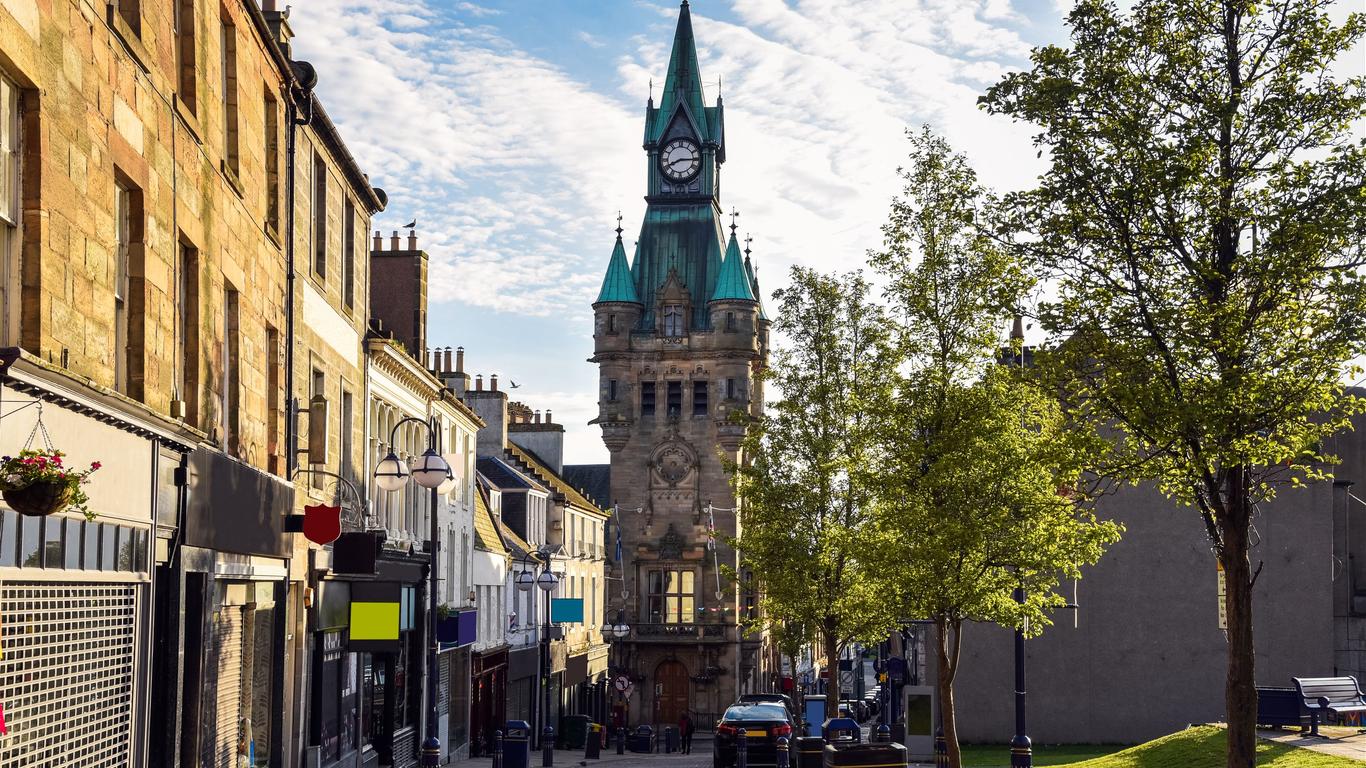Once serving as the capital of Scotland, Dunfermline lies near the north shore of the Firth of Forth. Not only was it the birthplace of James I in 1394 and Charles I in 1600, but it was also here that the Scottish-American industrialist and philanthropist Andrew Carnegie was born in 1835.
Things to do in Dunfermline
An architectural highlight of Dunfermline is its medieval Benedictine abbey, which dates back to the 12th century. It’s one of Scotland’s most important cultural landmarks and where some of the country’s greatest medieval monarchs are laid to rest. Marvel at the abbey’s impressive maze and visit the monks’ refectory before paying your respects at the tomb of Robert the Bruce.
If you want to learn more about the life and work of Andrew Carnegie, you can visit the 18th-century weaver's cottage where he was born. The Andrew Carnegie Birthplace Museum houses artwork, photographs and everyday objects donated by the Carnegies, as well as several family portraits. While wandering through the cottage, learn about life in 19th-century Dunfermline and what it was like for Andrew Carnegie to emigrate to the United States, where he would go on to make his fortune.
In 1902, Andrew Carnegie purchased Pittencrieff Park and gifted it to the people of Dunfermline, with a statue of the philanthropist dominating its northern boundary. Known locally as “The Glen”, the park also features a memorial bench dedicated to the Scottish rock guitarist Stuart Adamson, as well as three children’s playgrounds, a large greenhouse and several resident peacocks.
Getting around Dunfermline
Dunfermline is around 30 minutes’ drive from Edinburgh and 20 minutes from Edinburgh Airport. Regular trains connect to the Dunfermline Town railway station and buses travel through the centre of Dunfermline, which is compact enough to explore on foot.





